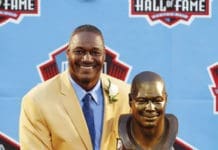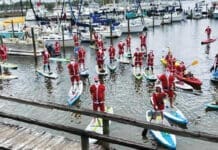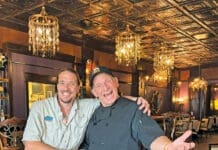Christians celebrate Christmas Day as the anniversary of the birth of Jesus of Nazareth, a spiritual leader whose teachings form the basis of their religion. Popular customs include exchanging gifts, decorating Christmas trees, attending church, sharing meals with family and friends and, of course, waiting for Santa Claus to arrive. December 25, Christmas Day, has been a federal holiday in the United States since 1870.
When Oliver Cromwell and his Puritan forces took over England in 1645, they vowed to rid England of decadence and, as part of their effort, cancelled Christmas. By popular demand, Charles II was restored to the throne and, with him, came the return of the popular holiday.
The pilgrims, English separatists that came to America in 1620, were even more orthodox in their Puritan beliefs than Cromwell. As a result, Christmas was not a holiday in early America. From 1659 to 1681, the celebration of Christmas was actually outlawed in Boston. Anyone exhibiting the Christmas spirit was fined five shillings. By contrast, in the Jamestown settlement, Captain John Smith reported that Christmas was enjoyed by all and passed without incident.
After the American Revolution, English customs fell out of favor, including Christmas. In fact, Christmas wasn’t declared a federal holiday until June 26, 1870.
At Valley Forge, Pennsylvania December 23, 1777, General George Washington, had what he called “infinite pain and concern” on his mind- British troop advancement and the dire state of his forces. Some 12,000 troops were setting up camp around him for the winter, putting together 2,000 or so rude huts with foraged wood and the barest of tools. Horses and oxen were in such short supply that the men were reduced to yoking themselves to makeshift carts. Many soldiers went without coats, shoes and blankets; most ate little in the way of meat. That day in camp, there were no cattle to slaughter and fewer than 30 barrels of flour in the commissary. Nearly 3,000 freezing, near-naked and starving troops, a quarter of Washington’s force had been declared unfit for duty. The six months that the Continental Army would spend at Valley Forge would be the most difficult, and ultimately, transforming the American Revolution. That December, at a low point in his campaign to expel the British, Washington found himself in a desperate moment, one that drove him to consider one of his boldest, and riskiest, military maneuvers yet: a Christmas Eve attack.
As the aborted battle plan disappeared into history on that afternoon of December 23, 1777. Two days later, on Christmas afternoon, the dirt ridden faced troops of the Continental Army emerged from their half-built huts and tattered tents to receive a holiday dinner of burnt mutton and watery grog. Many with their feet wrapped in rags, standing on their hats in the deepening snow.
The Continental Congress named George Washington head of the newly created United States Army in 1775 and charged him with throwing off the shackles of the greatest empire on earth. Incredibly, the worst of that winter at Valley Forge was the crucial moment in the war for American independence. Many, not the least George Washington, wondered if his bobtailed and bloodied army, freezing and starving and seemingly on the verge of “dissolving,” would even exist when the spring. For the moment, what Washington did not realize on that Christmas Day was that in the months to come the deprivations of Valley Forge would make his fighting men into a force that would emerge to topple an empire. It is well to remember our founding fathers fought and sacrificed their lives for the United States of America! I hope we remember over these Christmas Holidays that not only do we celebrate the birth of our savior Jesus Christ but also the birth of the most incredible nation on earth. A nation still worth fighting for.
May God Bless America and Merry Christmas to All !
Tim Norris, a long-time Panhandle resident is past Chairman of the Walton County Republican Party and is the current Republican Party of Florida’s State Committeeman for Walton County.































































